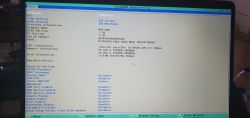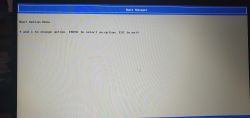Hello. I have a problem with the laptop, it is exactly the Huawei MateBook D 15.6 laptop with 256SSD disk, i5 processor and MX card. The problem is that after partitioning the disk, the system won't boot. Keeps popping up no boot devices and nothing else. I already explain what happened by anticipating the questions why I was doing it  Well, it annoyed me that I have two partitions on a 256GB disk and I could not even install any larger game because there was not enough space on both partitions, so I decided to make one. I used a program that was available on the Internet (I don't remember which one), everything was fine, but after restarting Windows would not start anymore. I tried to install a new system but it can't. I cannot enter the system installation at all. In the BIOS, I only have the Main tab and nothing else. The bios sees the disk, so it is not damaged (I checked if it would be okay after removing it, so in my opinion it did not see the disk working). I have probably looked at all the topics with similar problems and none of them helped. Maybe someone from the forum members here will give me some advice what I can do. I would like to add that I do not want to return it to the service and waste money if you can solve something yourself and it will not go under the warranty, because I started it (I checked if I could add a second disk). I attach photos to the topic.
Well, it annoyed me that I have two partitions on a 256GB disk and I could not even install any larger game because there was not enough space on both partitions, so I decided to make one. I used a program that was available on the Internet (I don't remember which one), everything was fine, but after restarting Windows would not start anymore. I tried to install a new system but it can't. I cannot enter the system installation at all. In the BIOS, I only have the Main tab and nothing else. The bios sees the disk, so it is not damaged (I checked if it would be okay after removing it, so in my opinion it did not see the disk working). I have probably looked at all the topics with similar problems and none of them helped. Maybe someone from the forum members here will give me some advice what I can do. I would like to add that I do not want to return it to the service and waste money if you can solve something yourself and it will not go under the warranty, because I started it (I checked if I could add a second disk). I attach photos to the topic.










